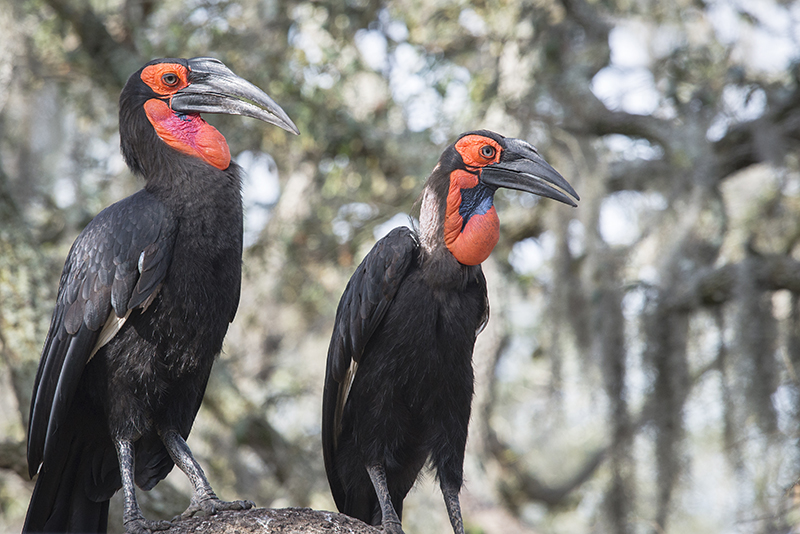The southern ground hornbill sometimes lives as a single breeding pair but more commonly in a cooperative breeding group in which there is a dominant breeding pair — usually the largest birds in the flock — and the rest of the group helps care for the young. These flocks typically consist of 2 to 11 individuals.
As their name suggests, southern ground hornbills spend the majority of their time on the ground and are rarely seen flying. They are non-migratory and have large defined territories that they defend using duets or choruses of calls. These calls are so loud that they are sometimes mistaken for the roaring of lions.
The flock will all go out on foot to forage and hunt for food. Their long beaks act like tongs, allowing them to catch prey such as venomous snakes while remaining out of harm’s way.
Fun Fact:
- The southern ground hornbill is the largest hornbill species
- The chorusing of southern ground hornbills can be heard of 1 mile away
- The southern ground hornbill possesses a strikingly red face, but females also have a blue to violet patch on their neck just below their beak
- The dominant breeding pair in a flock of southern ground hornbills typically lays eggs once every 6 years
Conservation Rating:
Vulnerable








![tampa-640x300-54[29]-noarrow](jpg/tampa-640x300-5429-noarrow.jpg)


